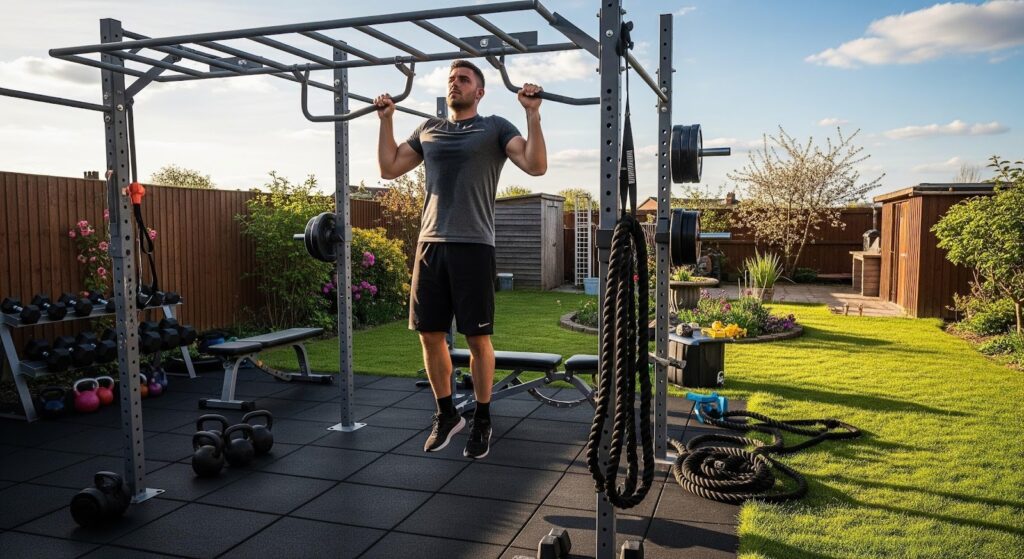That spare room sits empty. The garage gathers dust. Meanwhile, a sunny patch of the backyard beckons. Deciding where to build your personal fitness sanctuary is the first critical step, a choice that will shape every workout to come. This isn’t just about clearing space; it’s about choosing an environment that aligns with your goals, your personality, and the reality of your local climate. Do you crave the controlled focus of four walls, or does the call of fresh air and open sky fuel your motivation? Let’s weigh the distinct advantages and compromises of bringing your training indoors versus taking it outside.
The Allure of the Alfresco Workout
Training under an open sky offers a unique psychological boost that no indoor space can replicate. Sunlight provides natural vitamin D, and fresh air can dramatically elevate your mood and energy levels. Your available space is often larger, allowing for expansive movements like sled drags, heavy bag work, and long kettlebell circuits. The market now offers incredibly durable outdoor gym equipment made from powder-coated steel and weather-resistant materials, designed to withstand the elements. This path encourages functional, high-energy sessions where you can truly unleash power without worrying about noise or ceiling height. However, this freedom comes with clear dependencies on cooperative weather and the passing of the seasons.
The Controlled Environment Indoors
An interior gym provides one priceless commodity: consistency. Your climate is perfectly controlled, free from rain, scorching heat, or biting wind. This reliability makes building a long-term habit significantly easier. Delicate electronics like treadmills, smart bikes, and sound systems are protected from moisture and extreme temperature fluctuations. You gain access to a wider array of tools, including heavy barbells and intricate cable machines that would quickly deteriorate outside. Storage is also more straightforward and secure, with shelves and racks keeping your smaller gear organized and out of sight. The indoor route offers a professional, permanent feel that operates 24/7, regardless of the forecast.
Considering the Practical Realities
Your final decision must be grounded in practical logistics. How will you manage electricity? An outdoor setup requires strategic planning for lighting and possibly running power for certain devices. Security is another factor; can your equipment be safely stored outside, or would it need to be moved after each session? Noise is a major consideration for both options. Outdoor workouts might disturb neighbors with early morning clanging, while indoor lifting could send vibrations through the house’s structure. Also, think about flooring; a garage slab can handle dropped weights, but your living room floor cannot, and grass can become a muddy mess.

Matching Your Training Style
Your preferred type of exercise should heavily influence the location. Are you a dedicated strength athlete focused on heavy squats, bench presses, and precise barbell movements? An indoor setting is almost certainly better, providing the stable, predictable platform these lifts demand. Do you thrive on high-intensity metabolic conditioning, sandbag carries, and bodyweight circuits? An outdoor area might be your ideal canvas. Yogis and those who practice mobility flows might prefer the peaceful, private atmosphere of an indoor room. Your fitness identity deserves a home that supports its specific expression.
The Hybrid Solution
Who says you must choose just one? For many, the perfect arrangement is a hybrid model that leverages the strengths of both environments. Keep your primary strength equipment, the power rack, barbell, and bench, safely indoors. Then, use your outdoor zone for conditioning work, sled pushes, battle ropes, and bodyweight circuits. This approach gives you the best of both worlds: the precision and protection of an indoor studio combined with the expansive, energetic freedom of an outdoor training field. It also keeps your workouts varied and engaging, preventing monotony from ever setting in.
Your perfect gym location is the one that makes you want to train, day after day. It should feel less like an obligation and more like an invitation. Whether you are lacing up your shoes in a climate-controlled basement or warming up in the morning sun, the ultimate victory is building a space that seamlessly integrates into your life, making fitness not a chore, but a natural and rewarding part of your daily rhythm.



